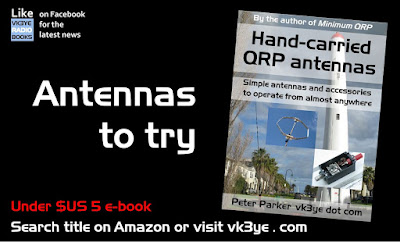One of the cheapest ways of getting some gain with a wire dipole antenna is to put a parasitic element about 0.15 to 0.2 wavelength in front or behind it.
If the parasitic element is about 5% longer and put behind the driven element it becomes a reflector. If it's 5% shorter and put in front of the driven element it becomes a director.
What about if you wanted to flip the beam direction by 180 degrees?
One approach is to use a parasitic element that when shortened becomes a director for one direction and if lengthened becomes a reflector. The position of the parasitic element can then stay the same for both directions.
How do you easily lengthen and shorten this element?
You don't actually need to physically change its length. Electrically changing it will do.
How do you do this?
You could start with an element that's 5% smaller than the driven element. That makes it a director. But if you put an inductor in its middle it's electrically lengthened to become a reflector. A switch across the inductor lets you choose whether you want the inductor or not and thus your antenna's favoured direction.
How much inductance do you need to make your wire beam bidirectional?
I can't recall reading much about it. But I did see this description by M0MCX of a 7 MHz switchable direction wire yagi. That used a 2uH inductor in the middle to make a director a reflector.
Scaling it up means you need about 0.5uH for 28 MHz. I also put the inductance and the desired frequency into a reactance calculator. The inductance has a reactance of about 89 ohms.
I also came across this single mast wire beam for 14 MHz. This used capacitors in the middle of elements instead of inductors. In this case all elements are the same length since all were potentially driven elements.
But if you put a capacitor in the middle of one you make it a director. The capacitance specified was 235 pF. The calculated reactance was about 47 ohm. But note that as you're starting with something of driven element size you are only electrically changing its length half as much as if you started with a reflector. If you were doing that on 14 MHz you'd be aiming for around double (~90 ohm) reactance. In other words around 120 pF capacitance.
But if you put a capacitor in the middle of one you make it a director. The capacitance specified was 235 pF. The calculated reactance was about 47 ohm. But note that as you're starting with something of driven element size you are only electrically changing its length half as much as if you started with a reflector. If you were doing that on 14 MHz you'd be aiming for around double (~90 ohm) reactance. In other words around 120 pF capacitance.
Anyway I thought I should write about this as this technique is possibly not discussed as much as it should. And I might do some experiments and put up a video soon.
PS: Many other antenna topics are covered in Hand-carried QRP Antennas. Available in electronic and paperback form (some countries) this well-reviewed book is a popular read amongst hams who go portable.




No comments:
Post a Comment